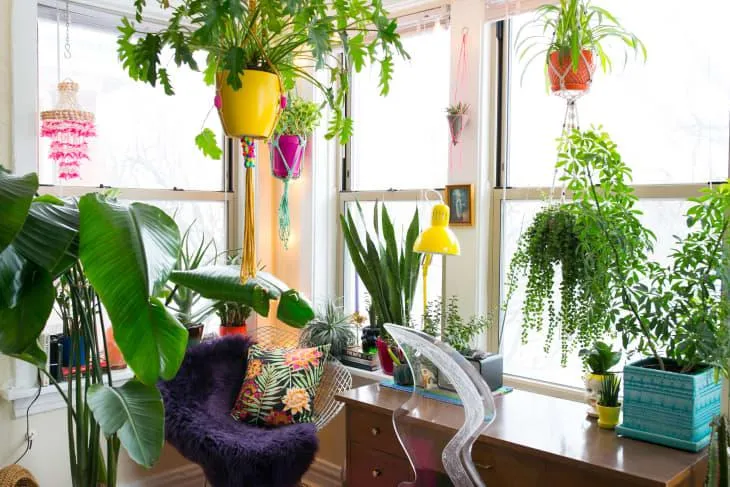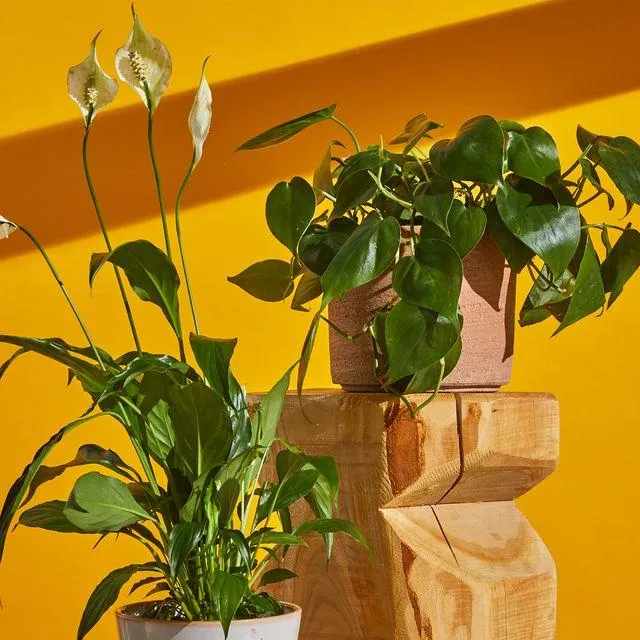All You Need to Know About Plants That Hang Down
A user searching for “plant that hangs down” likely has several intentions in mind. In this article, I’ll provide a comprehensive overview of hanging plants by addressing common questions from curious plant parents. From plant varieties and care tips to creative hanging ideas, I aim to cover all the bases.
What Types of Hanging Plants Are There?
- Trailing plants: As the name suggests, these plants trail gracefully over the edges of their containers. Some popular trailing plants include english ivy, pothos, philodendron, and vinca vine. Their long, flexible stems allow them to spill beautifully over walls or shelves.
- Hanging baskets: Many flowers and foliage plants thrive when grown in hanging baskets. Top picks include petunias, ferns, calibrachoa, and begonias. Their mounded habit makes them ideal for dangling floral displays.
- Air plants: Requiring no soil, air plants like tillandsia attach directly to surfaces using holdfasts. Their intriguing shapes and textures add unique visual interest when suspended. Air plants are very low maintenance.
From my experience gardening both indoors and out, trailing and hanging basket plants offer the easiest options for beginners due to their forgiving natures. Air plants demand slightly more specialized care but can be quite rewarding.
How Do I Care for Hanging Plants?
Proper care is key to keeping your dangling greenery happy and healthy. Here are some tips:
Light: Most hanging plants thrive in bright, indirect light. Place them in an east or west-facing window to avoid scorching. Rotate periodically for even growth.
Water: Water just until it drains from the container bottom, then discard excess. For trailing plants, water touching their leaves can cause rot. Consider bottom-watering for extra protection.
Soil: Well-draining potting mix is ideal. Remove weeds from hanging baskets so roots have room to breathe. Repot annually or when roots overgrow the container.

Fertilizer: Feed hanging plants lightly monthly during the growing season with a diluted liquid houseplant food or organic alternative like compost tea.
Pruning: Remove long, leggy stems on trailing plants to encourage fuller growth. Deadhead spent flowers on hangers to extend blooms.
Proper moisture and drainage are key to avoiding diseases with these plants. I’ve learned the hard way that overwatering can be disastrous! Keeping containers clean also helps prevent pests.
How Can I Display Hanging Plants Decoratively?
Once you’ve selected your plants, it’s time to think presentation. Hanging gardens offer endless creative outlet for sprucing up indoor and outdoor spaces. Here are some ideas:
- Hang trailing plants in macrame or jute hangers from ceiling rods, beams, or tall freestanding poles. Their foliage will cascade downwards beautifully.
- Fill decorative hanging baskets, cedar or rattan planters, or wire mesh containers with combinations of flowers, herbs, and foliage for dramatic visual appeal.
- Use air plant holders, clips, or natural twigs to affix these quirky plants individually on walls, doors, or mounted boards for modern boho flair.
- String together a bunting of matching plant hangers tied with twine for an enchanting porch or backyard ceiling.
- Suspend potted planting from swings, fire escape ladders, pergolas, or other structures where their vines can trail. A charming patio feature!
Get creative – hanging plants allow interesting multi-dimensional styling options above, at, and below eye level. From intimate indoor nooks to sprawling outdoor spaces, they add ambience wherever you choose to display them.
Any Maintenance or Troubleshooting Tips?
No plant setup is foolproof, sadly, but staying vigilant can help prevent issues with your hanging gardens. Here are some things to watch out for:

– Check wires/ropes regularly for signs of rust, weakness, or breakage and replace as needed before failure occurs. A dropped planter could cause damage!
– Inspect for pests like spider mites, scale, or mealybugs which may be harder to spot on trailing leaves. Isolate and treat promptly if found.
– Water logged soil is a no-go. If it feels overly wet or drainage holes are plugged, there may be root rot starting. Replace with fresh potting mix ASAP.
– Sunburn and windburn are risks outside. Gradually acclimate container plants to full sun. Provide protection in harsh, drying conditions.
– Leggy growth may require pruning stems back to the nodes to encourage bushier form, as with pothos. Don’t be afraid to edit!
With regular TLC and adjustments as needed, hanging gardens can offer years of hassle-free enjoyment. Proper maintenance is key to avoiding nasty surprises down the road.

Hanging Plants Care Guide
| Plant | Light | Water | Soil | Care Tips |
|---|---|---|---|---|
| Pothos | Low to bright indirect light | Let dry between waterings, water when top inch is dry | Moist, well-draining potting mix | Trim vines to encourage new growth, propagate in water |
| Spider Plant | Bright indirect light | Let dry between waterings, water when top inch is dry | Moist, well-draining potting mix | Trim “babies” to encourage new growth, propagate in water or soil |
| Philodendron | Bright indirect light | Let dry between waterings, water when top inch is dry | Moist, well-draining potting mix | Trim or train vines, propagate in water or soil |
| English Ivy | Bright indirect light | Let dry between waterings, water when top inch is dry | Moist, well-draining potting mix | Trim or train vines, propagate in water or soil |
FAQ
-
What kinds of plants hang down?
Plants that basically dangle from above are called “trailing” or ” vine” plants. Some common examples are pothos, english ivy, wandering dude, and spider plants. These kinds of plants grow by hanging down and often spreading along other surfaces.
-
How do hanging plants get water?
Hanging plants get water through a process called “wicking”. The long stems and leaves act like a wick, drawing water up from the reservoir below through tiny pores. Occasionally, the awesome mechanism of wicking doesn’t work perfectly – sometimes those darn vines look parched and dry. When that happens, a little extra water from above does the trick!
-
What is the best way to care for hanging plants?
The ideal way to look after dangling greenery is to water them just until the soil becomes damp, instead of soaking the pot. Let the dirt dry somewhat between waters. In addition, use a pot with good drainage to prevent root rot issues. Place them in bright spots but avoid direct sun, which can scorch the delicate leaves. Stake new shoot growth to encourage trails. Fertilize Monthly in spring and summer. Does this help keep your climbers looking their fabulous best?
-
How do I get my hanging plants to grow longer?
Unfortunately, some trailing plants lengthen more slowly than others. To inspire extra elongation, location is key – they require noticeable amounts of bright yet indirect light. In addition, consistent moisture and fertilizer throughout the growing season might possibly boost elongation rates. You could also experiment with plant growth regulators, which seem to work for some folks. Still, be patient – enjoy the dangling greenery as it reaches for the sky in its own good time!
-
Do insects bother hanging plants?
Perhaps surprisingly, pests don’t usually bother hanging plants too much. Their location high away from pets and foot traffic seemingly deters bugs. However, spider mites may appear on occasion, appearing as tiny red specks. If that happens, a gentle spray of water works well as a natural remedy. Alternatively, neem oil has proven quite efficient against mites, if looked into. Keep an eye out – quick action leads to fast results. With some care, pest problems can be kept to a minimum.

-
What is the best pot for a hanging plant?
Most experts agree that plastic or clay pots work well for hanging plants. They tend to have good drainage holes, which seem important since water can easily pool in a pot without good drainage. Ceramic and terra cotta options dry out fast but add nice aesthetic appeal. Avoid water retentive materials like untreated wood or glazed ceramic. When in doubt, lightweight, porous materials like plastic or fiberglass are less likely to lead to root problems “down the line”, as it were. What do you think – any other great hanging pot recommendations?
-
How do I transplant a hanging plant?
To move a dangling plant to a new pot, go for it in spring or autumn when it’s actively growing. Carefully cut or break the roots free from the current container. Shake off as much of the existing soil as you can. Now, place the plant in its new pot and fill in around the roots with fresh potting mix. Tamp it down gently. Within a few weeks, new roots should have spread out into the new soil. Keep watering regularly and watch for buds – with any good luck, it will recover quickly!
-
Will mice or rats chew on hanging plants?
It’s possible, but rodents apparently don’t often bother plants hanging above the ground. Most critters prefer easier morsels on the floor level. To better safeguard plants anyway, consider using sturdy pots constructed of materials rodents can’t gnaw, such as metal. You might also want to inspect hanging pots now and then, just in case – some varieties are slightly more tempting to creatures than others. Overall, elevated plants pose a lesser risk. But it never hurts to keep an eye out, right?
